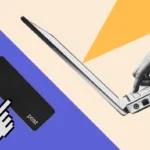
The BBC micro:bit is part of an initiative to get kids coding, primarily in the UK, however its influence is starting to spread world wide. The micro:bit itself is a small credit card sized computer with an ARM Cortex-M0 microprocessor on it, plus a variety of sensors and LEDS. You can program it via MicroPython, JavaScript, a visual blocks editor, or in the C programming language. It is cheap, child friendly and has been given free to every child in year 7 or equivalent across the UK. So regardless of your age, if you find the prospect of learning to code interesting then read on to find out more in my full review of the BBC micro:bit.
Contents
History
There is a whole generation of computer scientists, software engineers, coders and hackers who first got into computing due to the home computer revolution of the mid-1980s and early 1990s. Machines such as the Sinclair ZX Spectrum, the Commodore 64 and the BBC Micro became the entry point for whole swathes of young people to learn about computing. Unfortunately as we entered the era of the PC and game consoles the “roll up your sleeves” attitude of the home computer revolution started to fade and in turn universities started to see a drop in the number of applications for computer science related studies.
This decline has been partly addressed by the great work of the Raspberry Pi foundation and now by the work of the Micro:bit foundation. You may have noticed the similarities between the name of the 1980s BBC Micro and the new BBC micro:bit. That is of course intentional. The British Broadcasting Corporation was a major partner in the release and the original BBC Micro and now the corporation is playing a significant role with the launch of the new micro:bit.
The micro:bit
The micro:bit itself measures 4 x 5 cm and includes 25 LEDs, 2 programmable switches, Bluetooth, an accelerometer, a compass, 5 ring type connectors and a 23-pin edge connector. This makes it ideal for not only learning about software but also for learning the fundamentals of electronics. The board can be programmed in a number of different ways including in Python and using JavaScript. The board is actually based on ARM’s mbed OS platform and the various programming environments offer higher level programming access. However the fundamental principle is the same: you write a program, compile it and then flash it onto the board. Once programmed the software on the board remains in the flash memory and will run whenever the board is powered on. This means that you can make standalone projects which just run whenever you power up the micro:bit.
Blocks
Probably the easiest introduction to coding for the micro:bit is using Microsoft’s micro:bit Programming Experience Toolkit (PXT). It supports both block-based coding and JavaScript. If you haven’t seen block-based coding before, the premise is very simple. The programmer uses drag-and-drop to pick blocks from a predefined set and stitch them together to make a program. Maybe picture will help:
[Source:- Androidauthority]










